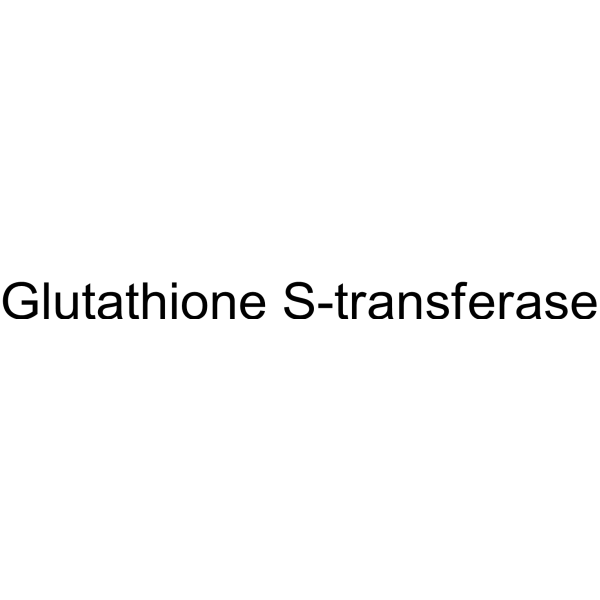谷胱甘肽转移酶

谷胱甘肽转移酶结构式

|
常用名 | 谷胱甘肽转移酶 | 英文名 | GultathioneStransferases |
|---|---|---|---|---|
| CAS号 | 50812-37-8 | 分子量 | N/A | |
| 密度 | N/A | 沸点 | N/A | |
| 分子式 | N/A | 熔点 | N/A | |
| MSDS | 中文版 美版 | 闪点 | N/A |
|
Effects of fluoride and ethanol administration on lipid peroxidation systems in rat brain.
Indian J. Exp. Biol. 51(3) , 249-55, (2013) Exposure to fluoride and excessive ethanol consumption has been identified as a serious public health problem in many parts of the world, including India. Thus, the effect of co-exposure to fluoride and ethanol for 3-6 weeks was studied on lipid peroxidation ... |
|
|
Ameliorative effect of mepenzolate bromide against pulmonary fibrosis.
J. Pharmacol. Exp. Ther. 350(1) , 79-88, (2014) Idiopathic pulmonary fibrosis is thought to involve lung injury caused by reactive oxygen species (ROS), which in turn is followed by abnormal fibrosis. A transforming growth factor (TGF)-β1-induced increase in myofibroblast number plays an important role in ... |
|
|
Downregulation of glutathione transferase π sensitizes lymphoma/leukaemia cells to platinum-based chemotherapy.
Br. J. Haematol. 162(1) , 135-7, (2013)
|
|
|
Interindividual variation in response to xenobiotic exposure established in precision-cut human liver slices.
Toxicology 323 , 61-9, (2014) Large differences in toxicity responses occur within the human population. In this study we evaluate whether interindividual variation in baseline enzyme activity (EA)/gene expression (GE) levels in liver predispose for the variation in toxicity responses by ... |
|
|
Hybrid molecule from O2-(2,4-dinitrophenyl)diazeniumdiolate and oleanolic acid: a glutathione S-transferase π-activated nitric oxide prodrug with selective anti-human hepatocellular carcinoma activity and improved stability.
J. Med. Chem. 56(11) , 4641-55, (2013) A series of hybrids from O(2)-(2,4-dinitrophenyl)diazeniumdiolate and oleanolic acid (OA) were designed, synthesized, and biologically evaluated as novel nitric oxide (NO)-releasing prodrugs that could be activated by glutathione S-transferase π (GSTπ) overex... |
|
|
Asn112 in Plasmodium falciparum glutathione S-transferase is essential for induced reversible tetramerization by phosphate or pyrophosphate.
Biochim. Biophys. Acta 1844(9) , 1427-36, (2014) The glutathione S-transferase from Plasmodium falciparum presents distinct features which are absent from mammalian GST isoenzyme counterparts. Most apparent among these are the ability to tetramerize and the presence of a flexible loop. The loop, situated be... |
|
|
Polymorphisms of NRF2 and NRF2 target genes in urinary bladder cancer patients.
J. Cancer Res. Clin. Oncol. 140(10) , 1723-31, (2014) NRF2 transcription factor is involved in modulation of various antioxidant and metabolic genes and, therefore, may modulate anti-carcinogenic potential. Association between polymorphisms of NRF2 and five NRF2-regulated genes and urinary bladder cancer (BC) ri... |
|
|
Cellular transport of microcystin-LR in rainbow trout (Oncorhynchus mykiss) across the intestinal wall: possible involvement of multidrug resistance-associated proteins.
Aquat. Toxicol. 154 , 97-106, (2014) We studied Abcc mediated-transport in middle and posterior intestine of the rainbow trout, Oncorhynchus mykiss. Luminal and serosal transport were evaluated in everted and non-everted intestinal sacs, respectively, incubated with 1-chloro-2,4-dinitrobenzene (... |
|
|
Myocardial toxicity of acute promyelocytic leukaemia drug-arsenic trioxide.
Eur. Rev. Med. Pharmacol. Sci. 17 Suppl 1 , 34-8, (2013) Arsenic trioxide (As2O3) is an environmental toxicant as well as an effective anti cancer agent against many types of cancers. It is a promising drug for patients with relapsed acute promyelocytic leukaemia (APL), but its clinical efficacy is burdened by the ... |
|
|
Alterations of ROS pathways in scleroderma begin at stem cell level.
J. Biol. Regul. Homeost. Agents 27(1) , 211-24, (2013) Scleroderma is a chronic systemic autoimmune disease (primarily of the skin) characterized by fibrosis (or hardening), vascular alterations and autoantibodies production.There are currently no effective therapies against this devastating and often lethal diso... |